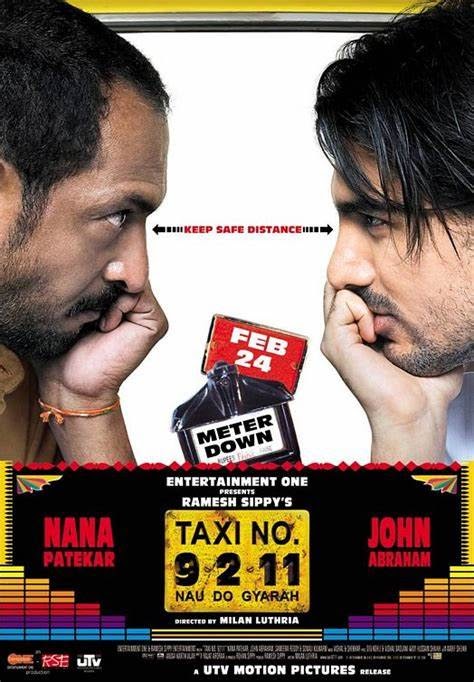- Indian cinema is flush with plagiarized plot, character, themes and narratives
“Plagiarism” is a term generally used in association with literature of all kinds – fiction, non-fiction, essays, even Ph.D. Thesis. But it also applies to other cultural and creative fields like drama, fine arts and cinema. But cinema is perhaps the biggest violator of the norms and principles of plagiarism across the world perhaps because it is easier for a filmmaker to pass off a ‘copy’ or an almost copy of any film across the world made perhaps in the 1970s and wrap it up with updated characterisations, a little switch in the plot, perhaps retaining a slight similarity in the narrative as his/her own.
The most recent example is a 47-minute Bengali short film shot completely during the lockdown is Tasher Ghawr which means “House of Cards.” As watched the film, I began to guess which way the film would turn because it seemed to have a very uncanny resemblance to a Canadian-English film calledDancing in the Dark (1986) directed by Leon Marr and enriched by the unforgettably incredible performance of the sole protagonist Edna by Martha Henry.
Dancing in the Dark won the Genie Award for Best Adapted Screenplay, Genie Nominee for Best Direction. TIFF Award for Best Canadian Feature Film – Special Jury Citation for Martha Henry. But the talented director Leon Marr did not ever make a feature film again. He had made a couple of short films and television plays before but nothing after this iconic film.
Tasher Ghawr, directed by Sudipto Roy and scripted by Sahana Dutta is all about Sujata (Swastika Mukherjee), a married woman from an upwardly mobile family who addresses the audience in a long monologue about what her life is all about. The story is therefore, completely from her perspective and the other characters she talks about, specially her husband, are either not visible at all and the husband is ‘visible’ in sliced out frames without giving him a full screen image. So, the characterisation is also entirely Sujata’s and the value judgements are also her own.
Film Still: Tasher Ghawr
She moves about her well-decorated apartment that extends out to a terrace garden she is very fond of and talks completely without any moral inhibitions about how her life is nothing but drudgery filled with housework and baking and cleaning and how she is aware of her husband’s torrid affair with his secretary but accepts it without making any noise about it. She addresses the audience directly cutting out the fourth wall of cinema where talking into the camera is not the general rule.
Dancing in the Dark has a completely different structure but the story is basically the same and so is the twist in the end. This tells the story of Edna, who worships her husband but does little else by clean, broom, sweep the floors of the apartment she lives in, cooks, cleans and works so hard quite happily that it makes you wonder if she suffers from OCD though OCD was lesser known when the film was made.
But the film opens in a mental institution where Edna has been confined to with an all-tome attendant ascribed to her as doctors believe that she is mentally imbalanced which led to her murdering her husband cruelly. She keeps a journal in which she writes down her thoughts in detail and the film keeps flashing back and forth between Edna in the mental home, Edna’s journal being read out from her journal in bits and pieces and Edna scrubbing and cleaning and sweeping every corner of her home scrupulously and has decided that that is her sole purpose in life – to keep a scrupulously clean house for the husband she worships.. She has absolutely no feeling of guilt for what she has done and stands firmly by her decision. But for the three years that she has been in the mental hospital, she has not uttered a single word with anyone including her attendant. So, the entire film is almost a silent document and a tribute to Edna as a woman betrayed completely by life, by relationships and of course, by her husband. She kills her husband by stabbing him repeatedly with a kitchen knife. We see her dancing away beautifully in her room and the film closes on this confusing note.
For a debut film shot completely within the lockdown restrictions made mandatory in the circumstances, and the outstanding performance by Swastika Mukherjee, Tasher Ghawr does not acknowledge the “inspiration” from the original where copyright laws have not been violated because of the more than three-decade gap, ethical violation has been done. Besides, Tasher Ghawr, for those who have watched the original Dancing in the Dark, is an extremely watered-down version of the original which makes no attempt to make it the sharp and edgy indictment against patriarchy and domestic violence within marriage the original film displays so brilliantly.
This is plagiarism. It refers to the use of another’s ideas, information, language, or writing when done without proper acknowledgement of the original source. Essential to an act of plagiarism is an element of dishonesty in attempting to pass off the plagiarised work as original. Plagiarism is not necessarily the same as copyright infringement, which occurs when one violates copyright law. Like most terms from the area of intellectual property, plagiarism is a concept of the modern age and not really applicable to medieval or ancient works.
Hindi cinema is flush with plagiarized plot, character, themes and narratives “borrowed”, “inspired from”, “motivated by” or “adapted from” some earlier film, Indian or International. The first film that comes to mind is Raj Kapoor’s Sri 420 which has sometimes been attacked for taking “inspiration” of Charlie Chaplin’s films that popularized the tramp image that made Charlie Chaplin to an all-time star.
Chori Chori (1956) featuring Raj Kapoor and Nargis in the romantic lead in a non-RK production was a “copy” of the Hollywood hit It Happened One Night (1934) produced and directed by Frank Capra featuring Clark Gable and Claudia Colbert. Phir Subah Hogi (1958) also starring Raj Kapoor in the main role known mainly for its rich musical score and songs was along the lines of Dostoevsky’s Crime and Punishment, a social comment. The film did not do well in commercial terms though the music remains a hot favourite till this day.
Flash forward to 1991 when we witnessed a very modernized and glamorous “remake” of the same film in Hindi directed by Mahesh Bhatt and starring his daughter Pooja Bhatt and Amir Khan called Dil Hai Ki Maanta Nahin. If the name of the director and/or film which is the “source” of the copy is mentioned in the credit titles, then plagiarism has not been committed. But mostly, this is never done so they are guilty of violating honesty in an ethical sense even if not in a legal sense.
The John Abraham and Nana Patekar starring Taxi number 9211 (2006) is said to have been a copy of Ben Affleck and Samuel Jackson’s Changing Lanes (2002), which saw a wealthy brat placed by circumstances at the mercy of a cab driver.


Some films lift from not one but more than one film and one example of this is in the film Barfi (2012) and though it was India’s official entry to the Oscars in 2013, the dying of the aged couple in each other’s arms in the end of the film is a direct lift from The Notebook (2004) while Ranbir Kapoor’s constant hide-and-seek game he plays with the police inspector (Saurabh Shukla) is borrowed generously from Charlie Chaplin’s short film The Adventurer.
The show, however, goes on and plagiarism continues without break. #innlive






